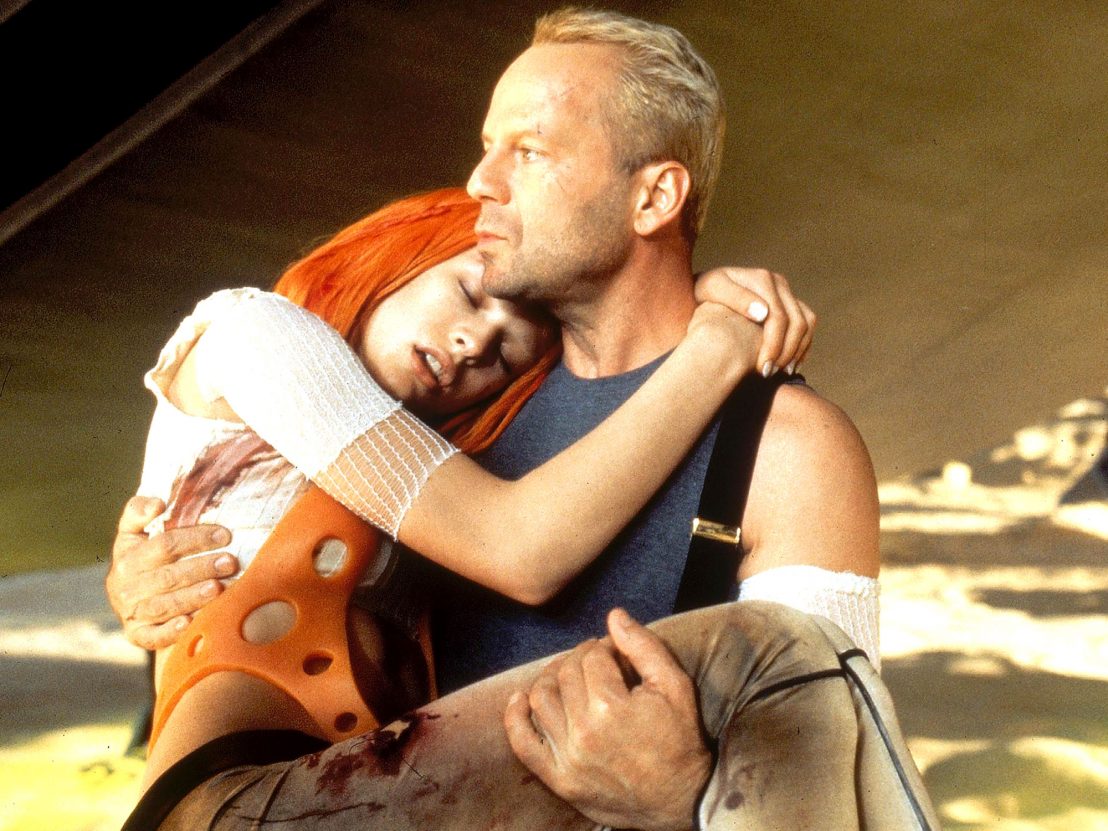
The result is a nude Jovovich, who is revealed in profile before being covered in strategically-placed bandages. In this first scene, Leeloo’s destroyed body has been brought into a lab and reconstructed within a horizontal glass cylinder.


The second and third scenes, however, are occupied by sympathetic characters-Korben Dallas (Bruce Willis), Father Vito Cornelius (Ian Holm) and David (Charlie Creed-Miles)-who are trying very hard not to gaze upon the “perfect being.” As mentioned above, however, the audience can always see her and Besson knows this and is seemingly playfully teasing.
#Watch the fifth element open load full
The first scene is the negative, with scientists beholding Leeloo’s nude form in full view. The Fifth Element does something provocative in three scenes, the first showing men exploiting Leeloo and the second and third having men going out of their way to not exploit her. In this way, both directors indict their audience for their own voyeuristic gaze.
#Watch the fifth element open load movie
Besson is more concerned with men awkwardly averting their gaze, but does something fascinating where he foregrounds his male characters with their backs turned to Milla Jovovich’s Leeloo while she undresses, but allows us to see her in the background. Jeunet, meanwhile, puts his women (and female-coded monsters) literally under glass that functions on a meta-textual level, mimicking the movie screen that the audience is watching. They tell their first true science fiction stories, set in far futures involving cloning and space travel and, as mentioned above, the male gaze centered on the female form.īoth directors handle this in unique ways. When they arrived in Hollywood these men, within a few months of one another, created movies with several points of intersection. The cosy partnership between French filmmakers and the English-language film industry goes back at least to 1903, when Georges Méliès established a branch of his Star-Film production company in New York, and sent his brother Gaston first to Texas, and then to Southern California, to set up studios that would make Westerns and adventure films (see Méliès 1988). When Jeunet, who had directed, with Marc Caro, such popular and well regarded French films as Delicatessen (1991) and La Cité des enfants perdus (1995), went to Hollywood in 1997 to film Alien Resurrection, he was following in the footsteps of a long line of directors who left France to make films abroad, most often in Hollywood but sometimes in Britain. Besson and Jeunet’s inevitable migration to Hollywood filmmaking, says Ezra, consequently positions them in a long tradition:

According to Elizabeth Ezra in her 2008 book Jean-Pierre Jeunet, the director shows the “expanding transnational dimension of French cinema” because of his involvement with Hollywood. This was, of course, looked down upon as it lacked realism and was too close to the Hollywood style. The latter director, by comparison, has been affiliated with “Cinéma du look” somewhat due to his post-modern influences as well as his passion for shots which are pleasurable to the eye, but has also been associated with “Cinéma Fantastique,” a long filmmaking tradition of portraying surreal, fantastical and whimsical science fiction stories. Inspired by New Hollywood films and television commercials, music videos, and fashion photography, it makes sense that Besson gravitated toward the United States. It referred to films that had a slick, gorgeous visual style and a focus on young, alienated characters who were said to represent the marginalized youth of President François Mitterrand’s France. Besson and Jeunet, however, have shucked that responsibility.įor the last 30 years the former director has instead been associated with the “Cinéma du look,” a French film movement that favored style over substance and spectacle over narrative.

While these two men have much in common, what’s most striking with The Fifth Element and Alien: Resurrection is the focus on voyeurism.Ĭahiers du Cinéma, the respected French film magazine, has argued since the 1950s that French cinema should be the section of world cinema to portray reality and avoid Hollywood conventions. The second director, Jean-Pierre Jeunet, would have a very tumultuous first American product. The first director, Luc Besson, had already announced his arrival with 1994’s Leon: The Professional. In 1997, two French directors released movies they’d made in the United States.


 0 kommentar(er)
0 kommentar(er)
